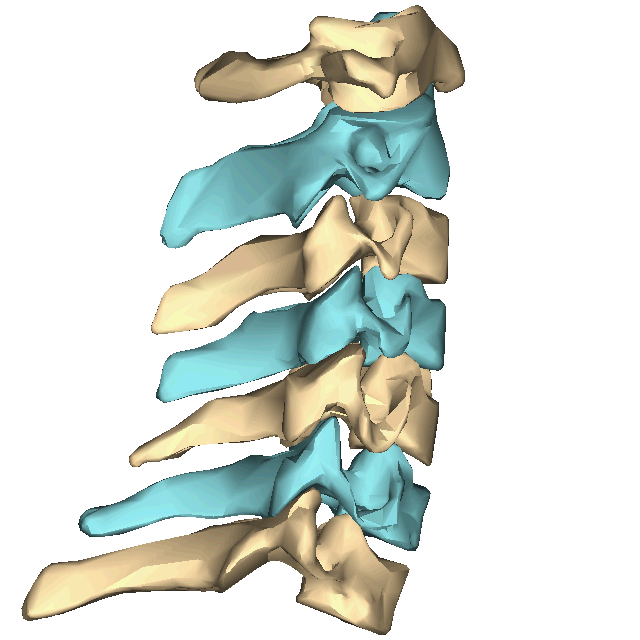ICD-9-CM 805 | ||
 | ||
Cervical spine disorders are illnesses that affect the cervical spine, which is made up of the upper first seven vertebrae, encasing and shielding the spinal cord. This fragment of the spine starts from the region above the shoulder blades and ends by supporting and connecting the Skull.
Contents
The cervical spine contains many different anatomic compositions, including muscles, bones, ligaments, and joints. All of these structures have nerve endings that can detect painful problems when they occur. Such nerves supply muscular control and sensations to the skull and arms while correspondingly providing our bodies with flexibility and motion.[1] However, if the cervical spine is injured it can cause many minor or traumatic problems, and although these injuries vary specifically they are more commonly known as "cervical spine disorders" as a whole.[1]
Symptoms
It is through upper frontal chest discomfort (also known as cervical angina) and scapular pains which signs of cervical spine disorders are shown. In 1937 a man named Oille was the first to state that these chest pains originated from the cervical nerve root. This new outlook helped shed light on exactly what signs indicated the beginning of these ailments for those suffering from cervical spine disorders. It is now recognized that these patients feel pain, numbness, discomfort, and weakness along with neurological symptoms.[2]
Complications
If not treated right away, there are many consequences and pains various cervical spine disorders can cause.[1]
Cause
There are several conditions and syndromes that can affect the cervical spine and they all vary due to the difference in place and type of injury.
Age factors
Diagnosis
The diagnosis process might include a physician who tests that the movement, strength, and sensation of the arms and legs are normal. The spine is examined for its range of motion and any pain that may arise from movement. Blood work might be utilized in addition to radiographic imaging in order to identify spinal cord diseases. Basic imaging techniques, which includes x-ray imaging, can reveal degenerative changes of the spine, while more advanced imaging techniques, such as computed tomography (CT) and magnetic resonance imaging (MRI), can allow visualization of more detailed anatomical structures, including that of the associated nerves and muscles. The most detailed and specific testing is electrodiagnostic, which helps to uncover whether the appropriate electrical signals are being sent to each muscle from the correlate nerves. This aids in localizing a problem's source[1]. There are risks to be considered with any diagnostic testing. For example, in the case of CT imaging, there is obvious benefit over x-ray in that a more thorough picture of the anatomy is exposed, but there is a trade-off in that CT has around a 10-fold increased radiation exposure; alternatively, while MRI provides highly detailed imaging of the anatomy with the benefit of no radiation exposure to the patient, the high cost of this test must be taken into account.
Treatments
If one’s symptoms are mild, treatments like Massage, Exercise, and Stress management will suffice in reducing pain and pressure, but those with more severe symptoms are told to undergo unique therapies based on their exact situation. These patients most likely will have their postures and spine alignment fixed, and/or treatments like electrical stimulation may be used to help in reducing pain and aid in flexibility. Medicine, epidural injections and surgeries are also implemented to treat such a disorder.[1]
